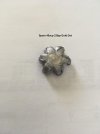RockyMtnMT
Official LRH Sponsor
We just finished testing some new bullets in Clear Ballistics 10% gel. We got successful results. I don't trust them. We have seen successful results in test media before and fortunately had deprivation cow tags at the same time and used the new bullet (at that time) to go and shoot some elk. The results were terrible and we did not market the bullet. I am so thankful that we had the opportunity to test on animals, because had we not, we would have marketed the bullet and had poor performance on game by customers. This would have been a nail in our coffin as a new business. We had not planned to use this current new design on our upcoming trip to Africa next month, but now are in scramble mode to get new loads developed and spot on drops to do testing on animals that we simply can't do here. There is no substitute for animal testing. Gel is a great visual, and if it doesn't work in gel, then it certainly won't work in an animal.
I also agree that putting bones and hides in the gel does not help with the testing. It takes a live animal with blood pressure. Same dead animal lacking blood pressure will give different results than when it was alive. Expiration time is what can not be determined in media testing.
I also agree that putting bones and hides in the gel does not help with the testing. It takes a live animal with blood pressure. Same dead animal lacking blood pressure will give different results than when it was alive. Expiration time is what can not be determined in media testing.

